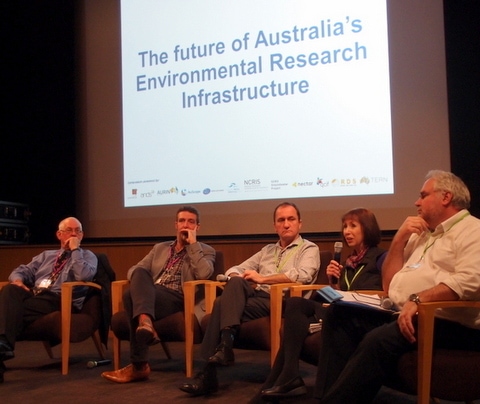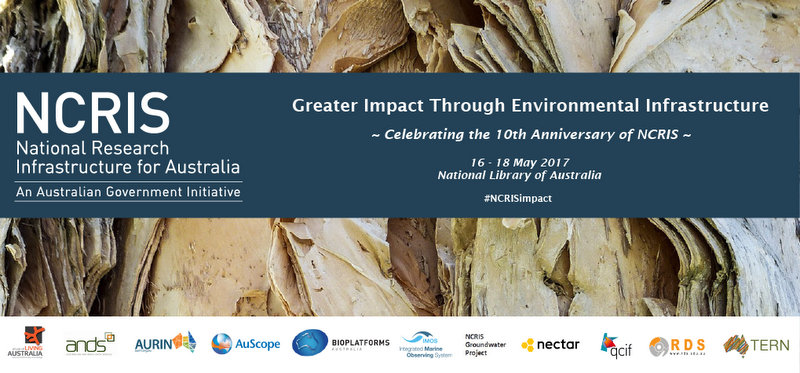What’s the future of Australia’s landscape observatory systems and the eResearch platforms that underpin them? How can we ensure that they continue to facilitate world-leading science and management to support informed decision-making and genuine triple bottom line benefits? Earlier this month TERN joined 10 of Australia’s NCRIS projects to reflect on such questions and discuss the future of environmental research infrastructure in Australia.
TERN is proud to be fostering a significant transformation in the way ecosystem science is done in this country, enabling more collaboration, partnerships and solutions that involve working across previously siloed disciplines, projects and organisations.
It is clear that collaborative, national and open environmental science infrastructure is critical for addressing national challenges facing Australia. Because of this, it’s now vital for our national infrastructure projects, including TERN, to act strategically and collectively to identify critical priorities and ensure that clear plans are in place for the short and long-term future.
Thankfully we are not alone in this transformative and strategic movement. Earlier this month TERN joined NCRIS partner projects in the environmental space to reflect on what, for some of the 10, has been a decade of collaborative, NCRIS-delivered impact and discuss the future impact of environmental research infrastructure in Australia.
Combined services; tailored infrastructure; open and analysis ready data; and meaningful collaboration around big ideas, were some of the guiding messages generated at the Greater Impact through Environmental Infrastructure Symposium.
According to Emeritus Professor Mark Westoby of Macquarie University the number one priority for ecosystem science research infrastructure is to support long-term (decades and centuries) change observations.
Mark spoke at the NCRIS symposium on the importance of continuity, economy and synergy for environmental monitoring and challenged the audience about the scale of the supporting infrastructure.

Dr John LaSalle of the Atlas of Living Australia, Dr Tim Rawling of AuScope, Ass Prof Glenn Moloney of Nectar, TERN’s Dr Beryl Morris and Prof Andrew Young of National Research Collections Australia discuss the future impact of environmental research infrastructure in Australia at May’s NCRIS Symposium
“Capturing patchy change processes at continent scale might seem prohibitively expensive, but it should be possible via skilful combinations between new remote sensing technologies and boots on the ground. Yearly measurements aren’t necessarily needed. Citizen science might be able to contribute.”
“Tracking environmental change over decades ought to be our top priority. We don’t know what questions researchers will be asking in 2117 so we just have to make reasonable guesses and cover as many possibilities as we can.”
Similar sentiments were expressed by all levels of government representatives at the symposium with Lyndon Llewellyn of the Australian Institute of Marine Science and Kate Wilson of NSW Office of Environment and Heritage both expressing the need for NCRIS projects to provide tailored infrastructure, data and services to drive decision-making.
“There is a need for data products with long-term outlooks but they must be delivered quicker, and be more responsive and meaningful to stakeholders,” said Lyndon. “Open and useful data is what’s needed.”
“We need high-quality data that’s usable for state government purposes and for areas experiencing environmental pressures,” said Kate.
Adam Lewis of Geoscience Australia spoke on further leveraging the niche that NCRIS has established in providing pre-processed analysis ready data.
“NCRIS projects must continue to provide lasting systems of measurement that produce reusable, standardized, and demand driven data that people can easily use,” he said.
Here at TERN we’re proud of the work we’ve already done, which provides the solid foundation for us to deliver the infrastructure, services and data that our stakeholders are demanding now and into the future.
The symposium was full of examples that show how NCRIS investment in TERN has enabled our users in research, government and industry to deliver positive impact. There are too many to discuss here, but we would like to draw your attention to a few TERN-delivered impact stories presented at the symposium:
- Dr Helen Cleugh of CSIRO and NERP on why measuring Australia’s breathing biosphere via TERN is so important;
- Prof Alfredo Huete of University of Technology Sydney on the role of TERN phenology data in public health and biodiversity impact studies;
- Pete Lyon of the Commonwealth Department of the Environment and Energy on using TERN to build a national capacity for Ecosystem Surveillance Monitoring; and
- Dr Stefan Maier of maitec on fire severity mapping in Northern Australia using TERN Infrastructure.
Thanks to 10 years of NCRIS investment and the research it facilitates, Australia is the most intensively observed continent on the planet. Now, for the first time in the history of Australian ecosystem science,
- Infrastructure exists that enables students, researchers and managers to collaborate and share data within and between disciplines and at all levels of government, efficiently and effectively;
- Coordinated capacity exists for consistent collection, storage, publication and sharing of useful ecosystem data; and
- Multi-sector stakeholders using these resources to actively pursue answers to complex environmental science and management questions that were intractable prior to TERN.
The challenge has been set. Together with our partners, including our fellow NCRIS projects, we must build on this remarkable transformation and provide world-leading infrastructure to deliver 10 more years of positive impact for Australia’s future. We look forward to working with you all on achieving this vision.
- All presentations from the NCRIS Symposium will be made available via the conference app soon
- The complete symposium program is available to download here
- Take a virtual tour of the NCRIS symposium on Twitter via #NCRISimpact







